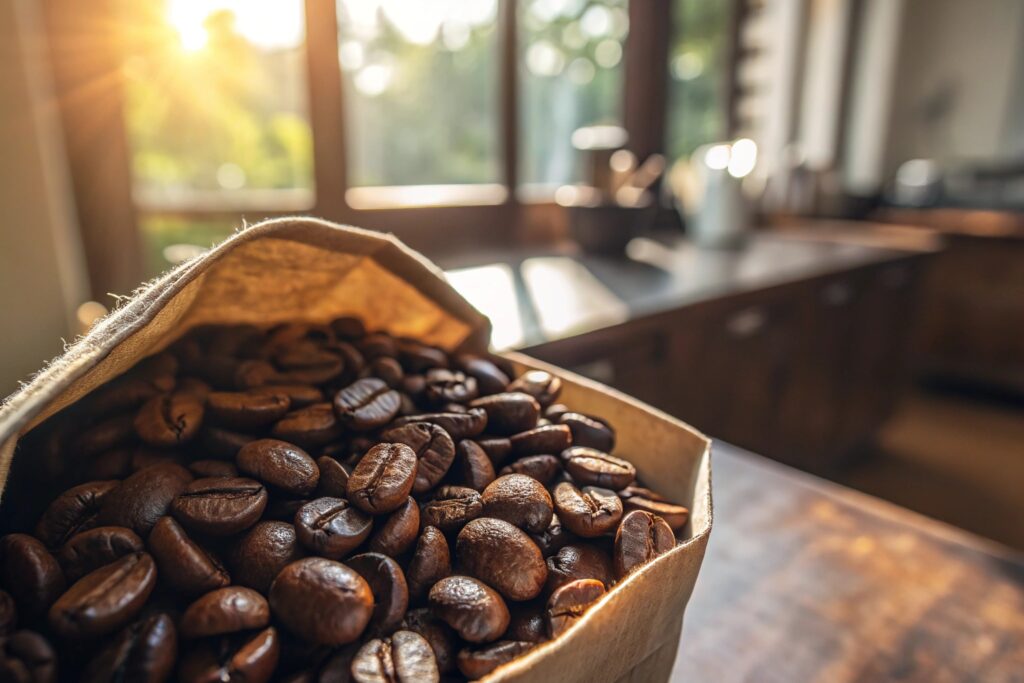Ever opened a coffee bag and found shiny, greasy-looking beans?
Coffee beans look oily because of the natural oils released during dark roasting1 or extended storage.
A few months ago, I sent a sample to a U.S. buyer who replied, “These beans are too shiny—they must be old!” But shiny doesn’t always mean stale. Let’s break down what really causes that oily surface.
Are oily coffee beans2 better?
People often assume shiny means fresh—or high quality.
Oily beans aren't better or worse—they simply reflect roast level3 and freshness.
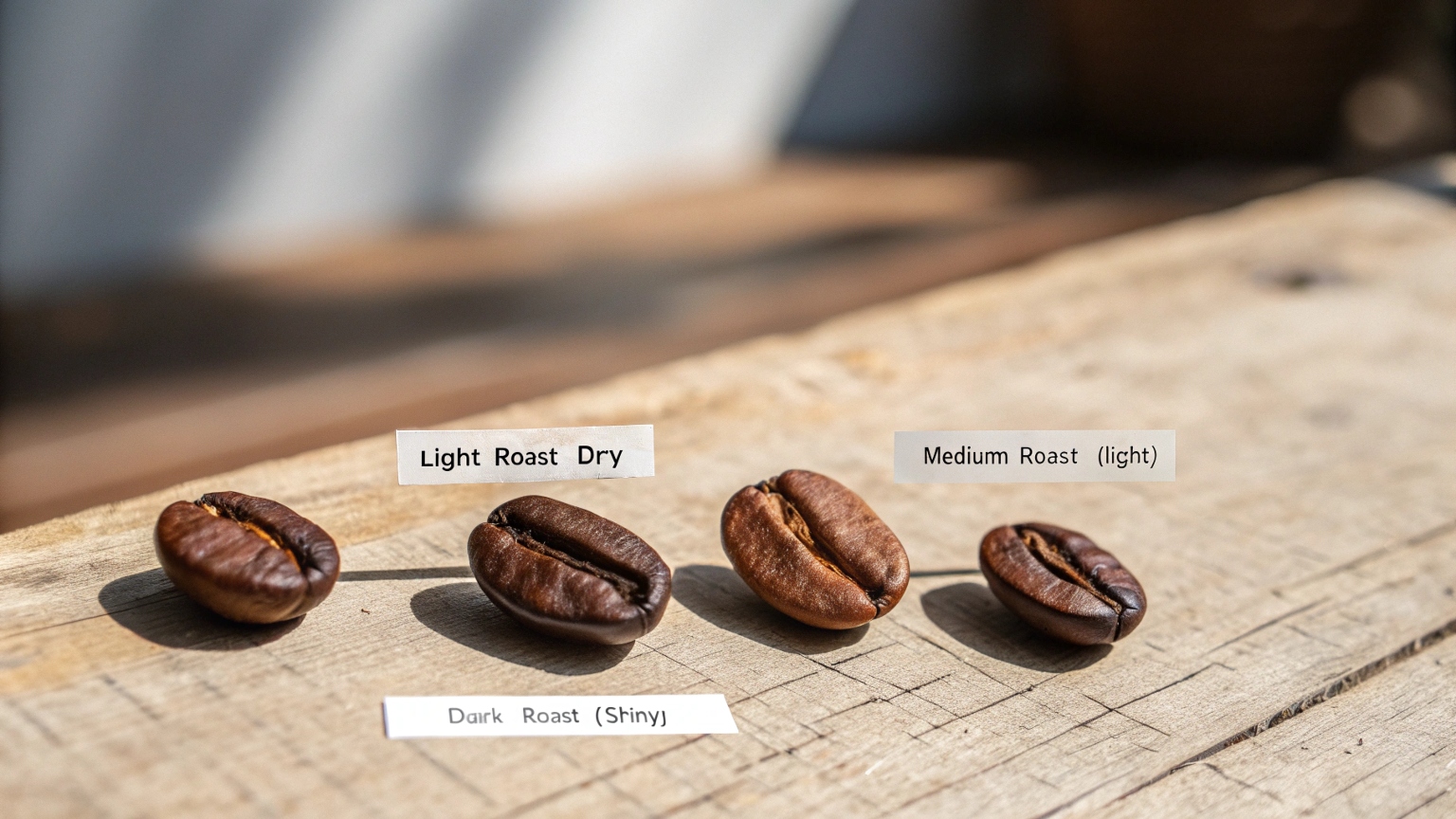
Roast level is the main factor
Coffee beans naturally contain oils. During light or medium roast4s, these oils stay inside the bean. When roasted darker, the heat causes the oils to migrate to the surface.
| Roast Level | Oil on Surface | Flavor Notes |
|---|---|---|
| Light Roast | None visible | Bright, acidic, floral |
| Medium Roast | Minimal | Balanced, sweet, nutty |
| Dark Roast | Very oily | Bitter, smoky, chocolatey |
Freshness vs over-roasting
While a shiny surface can indicate a dark roast, it can also mean the beans were roasted long ago. Over time, even medium roast4s can develop surface oil if stored improperly.
Dive deeper: what about taste?
Oily beans tend to have a bold, bitter profile. Some people love that punchy espresso shot. Others find it overpowering. It's not about “better,” but about what flavor you prefer.
- Pros of oily beans: intense flavor, thick crema in espresso.
- Cons of oily beans: can mask origin notes, may taste burnt or flat.
Why does my coffee look greasy?
It’s a common concern—your beans are shiny, and now your grinder is, too.
Your coffee looks greasy because oils have risen to the surface, often due to dark roasting1 or age.
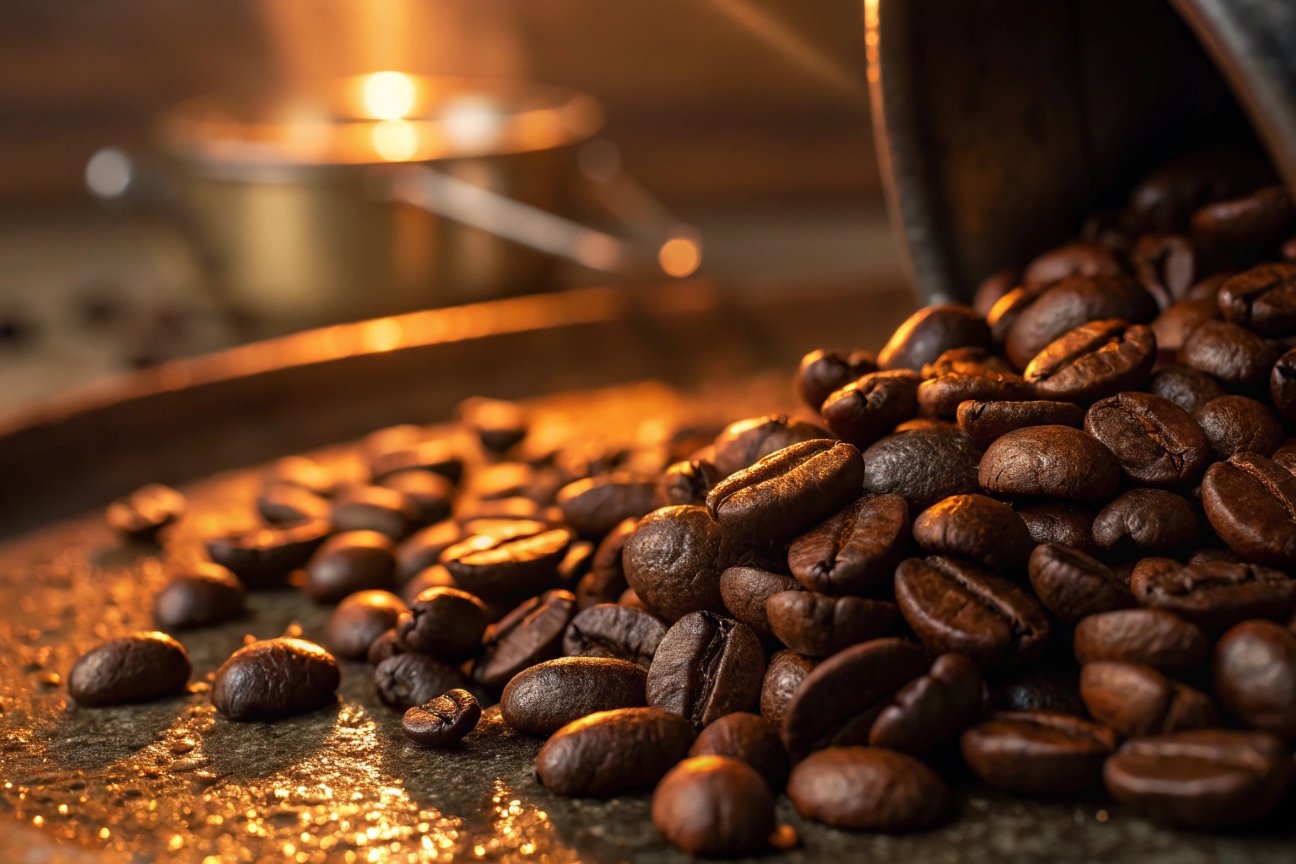
Roasting temperature and time
Grease comes from heat. When beans reach second crack (around 230°C), the cellular structure breaks down. This forces oils to the surface.
- Fresh dark roast: oily surface within a day or two.
- Older medium roast4: oil appears after weeks.
Storage conditions
Humidity and oxygen accelerate oil release. If beans are stored in warm, unsealed containers, the oils rise faster.
Dive deeper: should I be worried?
Not always. Greasy-looking beans are common in espresso blends5 and French roasts. But excessive oil can be a red flag if:
- Beans have an old, rancid smell.
- They clog your grinder quickly.
- The flavor tastes flat or sooty.
Why are some coffee beans oily and some aren't?
Some beans shine. Others stay dry. What’s going on?
The difference comes down to roast level3, bean type, and storage conditions6.
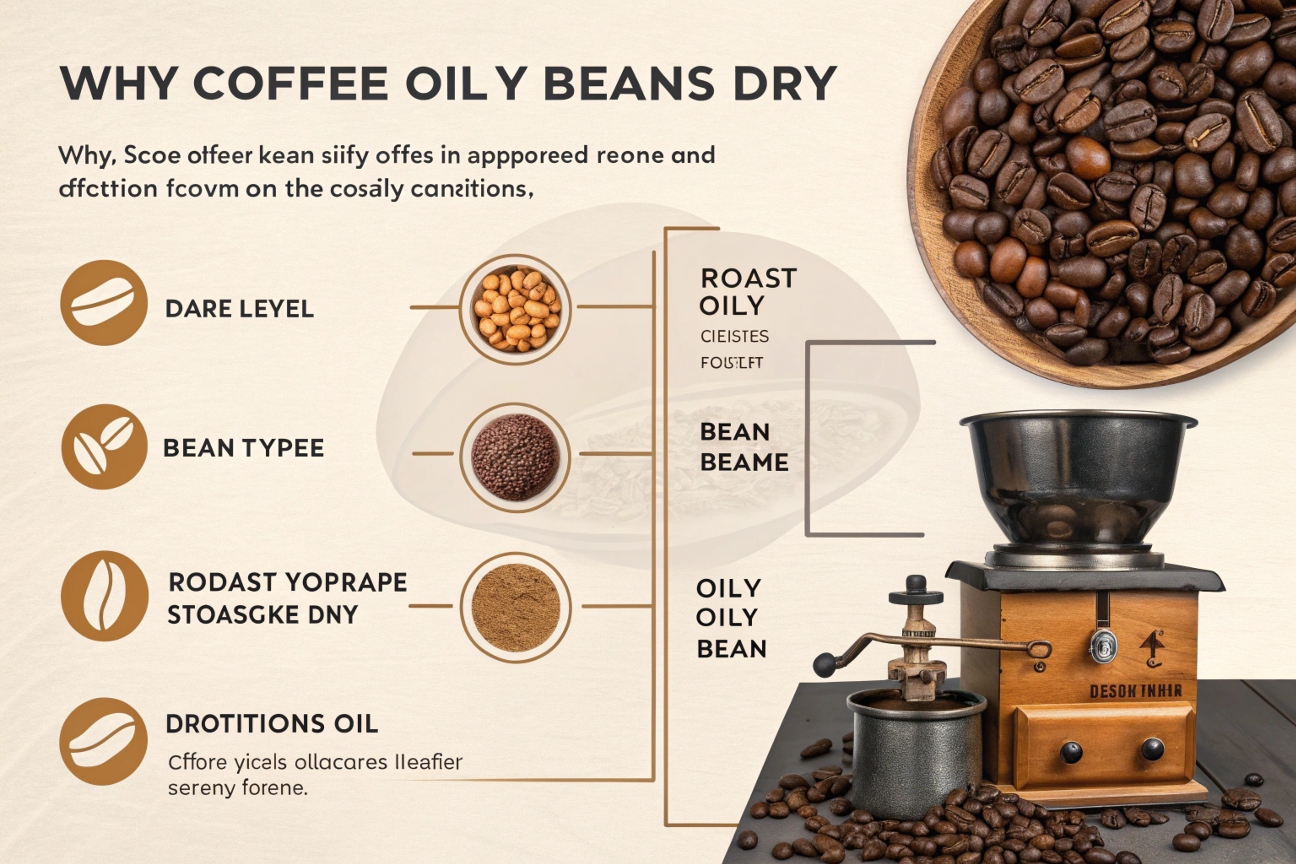
Roast level is key
As explained earlier, dark roasting1 breaks cell walls and exposes oil. Lighter roasts avoid this stage, so they stay matte and dry.
Bean density and origin
Some beans—especially high-altitude varieties—are denser and retain their structure longer. These beans may not show oil even at a medium-dark roast.
| Factor | Oily Beans | Non-Oily Beans |
|---|---|---|
| Roast level | Dark roast | Light to medium roast4 |
| Altitude grown | Low to mid altitude | High altitude |
| Time since roasting | Older (2+ weeks) | Freshly roasted |
| Storage condition | Warm, humid | Cool, airtight |
Dive deeper: what about bean type?
Certain bean types like Robusta tend to show oil faster due to higher fat content. Arabica beans, though more delicate, often stay drier unless roasted very dark.
Also, blends that use Robusta for crema (like Italian espresso) are more likely to appear oily.
What to do if coffee beans are too oily?
Oily beans can clog grinders and affect flavor—especially in home setups.
If your beans are too oily, adjust storage, use a burr grinder, or choose a lighter roast.
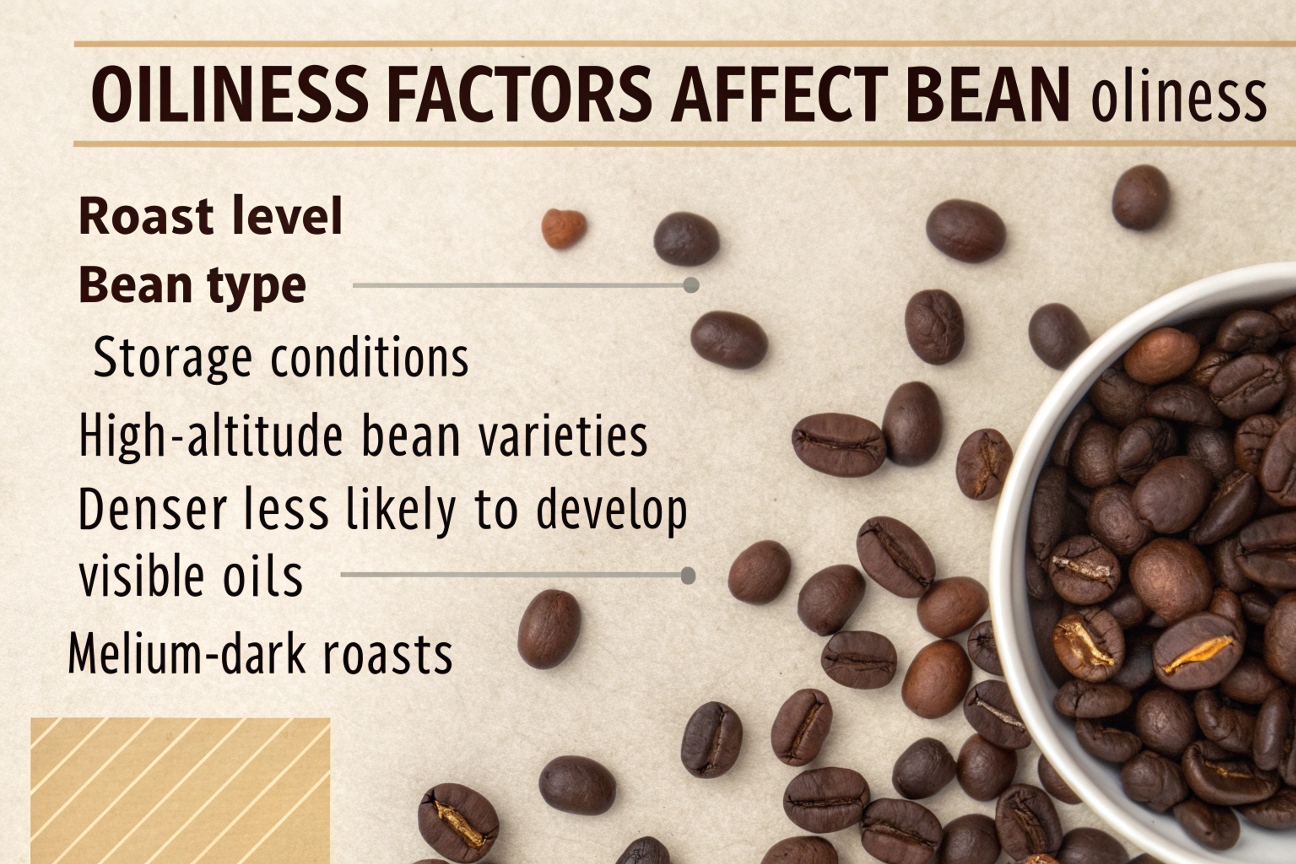
Use proper storage
Keep beans in airtight, opaque containers. Avoid heat, light, and moisture. This slows oil migration and prevents rancidity.
Choose the right grinder
Blade grinders and entry-level burr grinders often struggle with oily beans. Invest in a grinder that handles oil better (steel burrs, larger motors).
| Grinder Type | Handles Oily Beans? | Notes |
|---|---|---|
| Blade Grinder | No | Gets jammed easily |
| Entry Burr Grinder | Partially | Needs frequent cleaning |
| Commercial Burr | Yes | Designed for dark roasts |
Clean your equipment
Oils leave residue. That builds up, especially in espresso machines and grinders. Clean at least once a week if using oily beans.
Dive deeper: should I switch beans?
If your setup can’t handle oily beans, go for a medium roast4. You’ll still get depth without the mess. Or, ask your supplier for a dark roast with less surface oil—a skilled roaster can control that balance.
In my own packaging business, I’ve helped clients select roasts that suit their end users—not just for flavor, but also for how their customers brew at home or in cafés. For oily beans, we always recommend including a note about proper grinder maintenance7 on the packaging.
Conclusion
Oily beans aren’t bad—they’re just darker, older, or stored differently.
-
Explore how dark roasting impacts flavor and oiliness in coffee beans for a deeper appreciation of your brew. ↩ ↩ ↩
-
Understanding the reasons behind oily coffee beans can enhance your coffee experience and help you choose the right roast. ↩
-
Discover how different roast levels affect the taste and aroma of coffee, helping you select your perfect cup. ↩ ↩
-
Medium roast coffee offers a balanced flavor; learn why it might be the right choice for you. ↩ ↩ ↩ ↩ ↩
-
Understanding the composition of espresso blends can enhance your brewing experience and flavor profile. ↩
-
Proper storage is crucial for maintaining coffee quality; learn how to store your beans effectively. ↩
-
Regular maintenance of your grinder is essential for optimal performance; find out how to keep it clean. ↩

